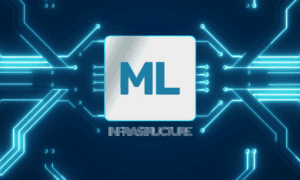1. ABSTRACT
This paper explores the transformative potential of Generative Artificial Intelligence (GenAI) in software requirement gathering processes. Through a comprehensive literature review and technical analysis, we examine how GenAI technologies enhance the efficiency, accuracy, and adaptability of requirement elicitation and management. The study analyzes current research on Large Language Models (LLMs) in requirement engineering, highlighting their capabilities in automating documentation, detecting inconsistencies, and facilitating stakeholder communication. Our findings indicate that while GenAI shows promising results in areas such as requirement specification, backlog management, and predictive analytics, challenges remain regarding non-functional requirements and data privacy. The paper also discusses future trends, including the evolution of domain-specific AI models, automated compliance integration, and AI-driven visual prototyping, suggesting a significant transformation in how software teams will approach requirement gathering in the coming years.
2. INTRODUCTION
Requirement gathering is a critical phase in software development, directly impacting a project’s success. It involves identifying, analyzing, and documenting stakeholder needs to ensure the development of a system that aligns with business objectives and user expectations. As the first step in the Software Development Life Cycle, it lays the foundation for designing, building, and delivering a functional and effective solution.
In modern software development, particularly in Agile and Scrum environments, requirements are never truly static. Unlike the traditional Waterfall model, where requirements are fixed upfront, Agile methodologies embrace evolving business needs, user feedback, and market conditions. As a result, requirement gathering becomes an iterative and adaptive process, with user stories and priorities continuously refined through sprint planning, backlog grooming, and stakeholder collaboration.
To manage these dynamic changes, teams employ various techniques such as interviews, prototyping, and use case modeling, while structured documentation—like Software Requirement Specifications and user stories—ensures clarity. Additionally, leveraging advanced technologies, including GenAI, enhances the efficiency and accuracy of requirement gathering by automating documentation, analyzing patterns in user needs, and predicting potential changes.
3. LITERATURE REVIEW
Research on Generative AI in requirement gathering highlights its potential and challenges. “Investigating ChatGPT’s Potential to Assist in Requirements Elicitation Processes” (1) compares ChatGPT with RE experts, finding strong performance in Abstractness, Atomicity, Consistency, Correctness, and Understandability, while noting LLM limitations. “Leveraging Large Language Models for Requirement Elicitation and Specification” (2) explores how LLMs extract requirements from natural language, enhance stakeholder engagement, and support backlog management, despite challenges like inaccuracies, biases, and data privacy. “Empirical Evaluation of ChatGPT on Requirements Information Retrieval Under Zero-Shot Setting” (3) highlights difficulties in identifying implicit Non-Functional Requirements (NFRs) and suggests fine-tuning or hybrid AI-human approaches for improvement.
4. TECHNICAL ANALYSIS
4.1 Enhancing Efficiency in Software Requirement Management
GenAI can streamline software requirement management by automating extraction, structuring, and refinement. It can help capture requirements from conversations, emails, and documents, reducing manual effort and ensuring completeness. AI can convert informal descriptions into structured specifications, detects inconsistencies, and improves clarity.
In Agile environments, AI can aid backlog grooming, refine user stories, and align requirements with business goals. It can enhance communication by translating business needs into technical requirements and summarizing discussions. Predictive analytics help anticipate changes, reducing late-stage rework. AI can also suggest reusable components and automate repetitive tasks, improving efficiency and compliance.
4.2 Leveraging Generative AI for Comprehensive Requirement Gathering
GenAI can enhance requirement gathering by providing contextual insights and ensuring completeness early in a project. It can act as an intelligent assistant, recommending relevant domains, best practices, and critical requirement areas based on project context. By analyzing documentation and industry standards, it can identify key aspects like functionality, performance, security, compliance, and user experience. Additionally, it can highlight domain-specific concerns such as cloud scalability, real-time IoT processing, and data privacy, ensuring comprehensive coverage.
GenAI can facilitate brainstorming by generating targeted questions that help teams think holistically about requirements. This structured approach ensures comprehensive gathering aligned with business goals. Given a high-level prompt, GenAI can not only generate requirements but also define key areas for a complete solution, breaking down the problem into core components.
For instance, given a high-level prompt like “Build requirements for transportation management software,” GenAI can define key areas for a complete solution. It breaks down the problem into core components, such as:
- Customs & Compliance – Managing regulations, duties, and forms.
- Carrier Integration – Connecting with freight, trucking, and transport networks.
- Real-Time Tracking – Enabling GPS and sensor-based shipment visibility.
- Exception Handling – Automating alerts for delays, route changes, and lost shipments.
- Cost & Route Optimization – Suggesting efficient transportation plans.
- Multi-Currency & Taxation – Handling transactions, conversions, and tax policies.
- Inventory Syncing – Integrating with warehouse management systems.
- Access Control – Defining roles for stakeholders.

Source: OpenAI’s DALL·E, ChatGPT.
5. FUTURE TRENDS
Future research aims to integrate LLMs with domain-specific knowledge bases, enhance real-time stakeholder interactions, and refine AI-driven tools for seamless collaboration with human analysts. AI-powered conversational agents will act as intelligent business analysts, dynamically engaging stakeholders to elicit and refine requirements. Industry-specific models will provide tailored insights for sectors like healthcare, finance, and logistics, ensuring compliance with regulations such as GDPR, HIPAA, and PCI-DSS.
AI will also improve requirement validation by detecting ambiguities and inconsistencies through historical data analysis. In Agile and DevOps environments, it will enable adaptive requirement management, refining specifications based on user feedback and market trends. AI-powered visual prototyping will further enhance early-stage requirement visualization through wireframes and system models.
Seamless integration with project management tools like JIRA, Confluence, and GitHub will automate tracking, impact analysis, and updates. Predictive analytics will forecast requirement changes based on industry trends and competitor strategies. AI-driven collaboration will bridge gaps between business and technical teams, ensuring alignment.
As AI becomes more embedded in requirement gathering, ethical considerations and transparency will be crucial. Future AI systems will provide clear reasoning behind recommendations, fostering trust. By balancing AI automation with human expertise, organizations can achieve more efficient, user-centric, and adaptable software solutions.
6. CONCLUSION
Integrating GenAI into requirement gathering improves efficiency by automating elicitation, refinement, and validation. While it minimizes errors and streamlines processes, challenges persist in managing non-functional requirements, ensuring data privacy, and capturing context-based requirements.
Future adoption will depend on balancing AI automation with human expertise, ensuring transparency, ethics, and business alignment. As AI evolves, human analysts will shift from routine tasks to strategic roles, focusing on stakeholder engagement and complex decision-making.
To maximize GenAI’s potential, future research should address current limitations, develop domain-specific models, and establish best practices for human-AI collaboration. Advancements in handling contextual requirements will be crucial to delivering more accurate, adaptable, and user-centric software solutions.
7. REFERENCES
1) Agarwal, R., Chimalakonda, S., & Lee, D. (2023). Investigating ChatGPT’s Potential to Assist in Requirements Elicitation Processes. arXiv preprint arXiv:2307.07381.
2) Bhardwaj, M., & Kumar, S. (2023). Leveraging Large Language Models for Requirement Elicitation and Specification. arXiv preprint arXiv:2303.07839.
3) Chen, X., & Wang, Y. (2023). Empirical Evaluation of ChatGPT on Requirements Information Retrieval Under Zero-Shot Setting. arXiv preprint arXiv:2304.12562.
4) A. Nguyen-Duc, B. Cabrero-Daniel, A. Przybylek, C. Arora, D. Khanna, T. Herda, U. Rafiq, J. Melegati, E. Guerra, K.-K. Kemell, M. Saari, Z. Zhang, H. Le, T. Quan, and P. Abrahamsson, “Generative artificial intelligence for software engineering – a research agenda,” 2023. arXiv preprint arXiv:2310.18648
8. AUTHOR’s BIO
Sandeep Kumar Gond is a seasoned software engineer with over 20 years of experience in designing and developing distributed systems. He has led multiple high-impact projects, driving scalable architectures, technical leadership, and mentoring senior engineers. He is currently exploring the applications of Generative AI in the software development lifecycle.



































